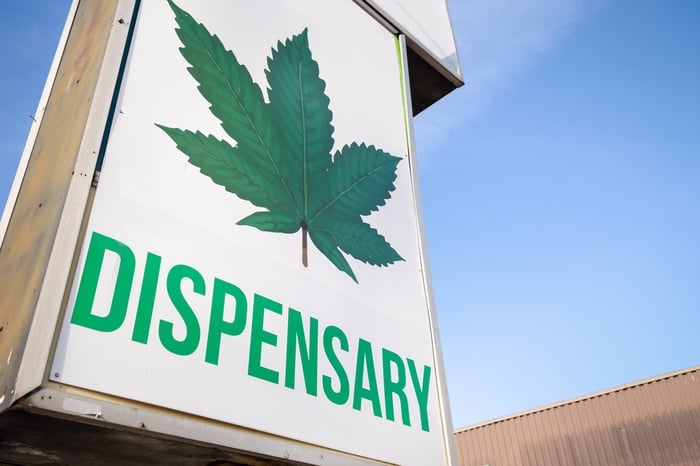For much of the past 18 months, Wall Street and investors have enjoyed an historic stock market rally. Since bottoming out on March 23, 2020, the widely followed S&P 500 has doubled in value. For some context, the S&P 500 has average an annualized total return (including dividends paid) of closer to 11% since the beginning of 1980.
But for some stocks, there's plenty of upside still to come. According to high-water price targets from select analysts and/or Wall Street investment banks, the following four growth stocks offer share-price upside ranging from a low of 187% to a high of 434% over the coming 12 months.

Image source: Getty Images.
Plug Power: Implied upside of 187%
The first high-growth stock with the potential to get investors' motors running is hydrogen fuel-cell solutions provider Plug Power (PLUG 1.11%). Analyst Amit Dayal of H.C. Wainwright sees Plug Power heading to $78, which is a far cry from its closing price of $27.19, as of this past weekend. Dayal's Street-high price target implies a 187% increase in Plug's shares.
The excitement surrounding Plug Power has to do with developed countries emphasizing green-energy alternatives to reduce carbon emissions. Plug's hydrogen fuel cells can be used to power consumer and commercial vehicles, and they have industrial applications, as well (e.g., forklifts). Further, there's an opportunity for the company to benefit at multiple levels of this green-energy shift, such as in building hydrogen refilling stations.
The buzz surrounding this company hit a crescendo in January, shortly after Plug landed two major partnerships. First, SK Group took a 10% equity stake in the company and agreed to form a joint venture to bring fuel-cell technology to South Korea and other Asian countries. A few days later, Plug and French automaker Renault struck an agreement to form a joint venture to go after Europe's light commercial-vehicle market.
There's absolutely no question that Plug Power has top-notch joint-venture partners and an incredible opportunity at its doorstep. The big question is: Can it grow into its current $16 billion market cap with profitability still years away? To that end, I'm not so certain.

Image source: Getty Images.
Columbia Care: Implied upside of 228%
Marijuana stocks are another source of supercharged growth potential. In particular, U.S. multistate operator (MSO) Columbia Care (CCHWF 10.53%) offers jaw-dropping upside. With the highest price target on Wall Street calling for $12 a share, and Columbia Care ending the previous week at $3.66, the upside potential here totals 228% over the coming year.
Like a number of smartly run MSOs, Columbia Care has predominantly targeted limited-license cannabis markets. These are markets where regulators purposely limit how many dispensaries can open, as well as how many licenses a single business can hold. By planting its flag in limited-license markets like Ohio, Virginia, and Pennsylvania, Columbia Care is ensuring that it'll have a fair shot to build up its brands and garner a loyal following in potential billion-dollar markets without being overrun by other MSOs that have deeper pockets.
The other factor that really stands out with Columbia Care is its penchant for inorganic growth. This is a company that's been pulling the trigger on multiple acquisitions each year to expand its reach. As of last week, it had 75 operating dispensaries in legalized states.
For the moment, the one-time costs associated with acquisitions appears to be holding down Columbia Care's bottom line, as well as its valuation. But if the company's management team can effectively build up its brand in a number of key markets, this lofty price target may not be out of reach.

Image source: Getty Images.
Exelixis: Implied upside of 201%
Biotech stocks can be like the roulette wheel of Wall Street. While the odds of a company developing a breakthrough drug aren't great, the payoff, if successful, can be huge.
In the case of Exelixis (EXEL 0.22%), the payoff has been substantial. But according to analyst Michael King of H.C. Wainwright, this company has the potential to hit $65 a share. This would effectively triple its valuation, based on where it closed this past week.
The key to Exelixis' long-term success rests with cancer drug Cabometyx, which is approved to treat first- and second-line renal cell carcinoma and advanced hepatocellular carcinoma. By no later than next year, it should be generating north of $1 billion in recurring annual sales.
What's so intriguing about Exelixis' lead drug is that it's being studied in approximately six dozen clinical trials as a combination treatment or monotherapy. Though not all of these studies will be successful, it nevertheless offers a solid opportunity for Cabometyx's label to expand over time.
Exelixis is also sitting on a mountain of cash and investments -- it's expected to end the year with between $1.7 billion and $1.8 billion. This capital is helping to fuel its internal research engine and could be used to acquire other therapies or businesses. While I don't believe Exelixis will come close to $65 a share in the near term, I do foresee healthy upside in its future.

Image source: Getty Images.
Inovio Pharmaceuticals: Implied upside of 434%
But the crème de la crème of upside opportunity, at least on this list, is clinical-stage biotech stock Inovio Pharmaceuticals (INO 14.89%). According to analyst Hartaj Singh of Oppenheimer, Inovio is forecast to hit $35 a share. Based on its $6.55 closing price last week, this implies up to 434% upside in Inovio's shares.
Most of Singh's bullishness is centered around Inovio's development of a coronavirus disease 2019 (COVID-19) vaccine. With billions of people worldwide still needing to be inoculated, there's room for additional vaccine players.
On the other hand, Inovio's development of its COVID-19 vaccine, INO-4800, has been just as dubious as its long-term drug-development track record. Last year, it looked as if Inovio had a real shot to be one of the first developers to hit the market with a COVID-19 vaccine. Unfortunately, Inovio's plans were derailed by partial clinical holds in the United States. To boot, the U.S. eventually pulled phase 3 trial funding, which has forced Inovio to conduct its large-scale phase 3 study in Mexico and other countries around the globe.
Perhaps the bigger worry here is that, despite a robust clinical pipeline, Inovio has yet to bring a drug to pharmacy shelves more than 40 years after its founding. Inovio has been lucky enough to raise capital to keep its research going, but it's never been able to deliver on the hype surrounding the company. Suffice it to say, I don't foresee a $35 price target coming to fruition anytime soon, if ever.


